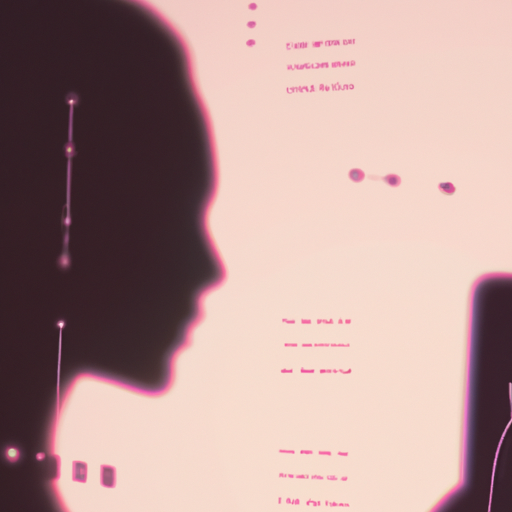
The Impact of Gender Data Bias on Policy-making and Decision-making Processes
Unveiling the Gender Data Gap: Unraveling Bias in Our Data
In today’s data-driven world, information is power. Data is used to inform policy-making and decision-making processes across various sectors, from healthcare to education to economics. However, what if the data we rely on is biased? What if it fails to capture the experiences and realities of half the population? This is the gender data gap, a pervasive issue that has far-reaching consequences.
The impact of gender data bias on policy-making and decision-making processes cannot be overstated. When data is incomplete or skewed, it leads to flawed policies and decisions that fail to address the needs and concerns of women and girls. This perpetuates gender inequality and hinders progress towards achieving gender equality.
One area where the gender data gap is particularly evident is in healthcare. Historically, medical research has focused primarily on men, with women being underrepresented or excluded altogether. This has resulted in a lack of understanding of how diseases and treatments affect women differently. For example, heart disease symptoms in women can be different from those in men, but this knowledge gap has led to misdiagnosis and inadequate treatment for women.
Education is another sector where the gender data gap has significant implications. Without accurate data, it is difficult to identify and address gender disparities in access to education, dropout rates, and learning outcomes. This perpetuates stereotypes and limits opportunities for girls, hindering their ability to reach their full potential.
Economic policies and decision-making processes are also affected by the gender data gap. Without comprehensive data, it is challenging to understand the barriers women face in the labor market, such as wage gaps and occupational segregation. This hampers efforts to create inclusive and equitable economic systems that benefit everyone.
So, why does the gender data gap persist? One reason is the underrepresentation of women in data collection and analysis. Women are often excluded from decision-making positions and research roles, resulting in a lack of female perspectives and experiences in the data. Additionally, societal biases and stereotypes can influence the way data is collected and interpreted, further perpetuating gender biases.
Addressing the gender data gap requires a multi-faceted approach. First and foremost, there needs to be a commitment to collecting gender-disaggregated data. This means collecting data that is broken down by sex and gender, allowing for a more nuanced understanding of the experiences and needs of different groups. Governments, organizations, and researchers must prioritize this type of data collection to ensure that policies and decisions are based on accurate and inclusive information.
Furthermore, efforts should be made to increase the representation of women in data collection and analysis. This means promoting gender equality in research and decision-making positions, as well as providing training and support for women in these fields. By diversifying the voices and perspectives involved in data collection and analysis, we can ensure that the gender data gap is addressed at its root.
In conclusion, the gender data gap has a profound impact on policy-making and decision-making processes. It perpetuates gender inequality and hinders progress towards achieving gender equality. Addressing this gap requires a commitment to collecting gender-disaggregated data and increasing the representation of women in data collection and analysis. By unraveling bias in our data, we can create more inclusive and equitable policies and decisions that benefit everyone.
Addressing the Gender Data Gap: Strategies for Collecting and Analyzing Gender-disaggregated Data

Unveiling the Gender Data Gap: Unraveling Bias in Our Data
Addressing the Gender Data Gap: Strategies for Collecting and Analyzing Gender-disaggregated Data
In today’s data-driven world, information is power. Data helps us understand trends, make informed decisions, and shape policies. However, there is a significant gender data gap that often goes unnoticed. This gap refers to the lack of gender-disaggregated data, which means that we don’t have enough information about how men and women experience the world differently. To address this issue, we need to develop strategies for collecting and analyzing gender-disaggregated data.
One of the main challenges in collecting gender-disaggregated data is the lack of awareness and understanding of its importance. Many organizations and institutions fail to recognize the need for gender-specific data, assuming that one size fits all. However, this approach overlooks the unique challenges and experiences faced by different genders. To bridge this gap, we must educate stakeholders about the value of gender-disaggregated data and its potential to inform policies and programs.
Another obstacle in collecting gender-disaggregated data is the bias that exists within our data collection methods. Traditional data collection techniques often fail to capture the nuances of gender differences. For example, surveys may ask generic questions that do not account for the specific experiences of men and women. To overcome this bias, we need to develop gender-sensitive data collection tools that capture the diverse realities of different genders.
One effective strategy for collecting gender-disaggregated data is to involve women and other marginalized genders in the data collection process. By including their perspectives and experiences, we can ensure that the data collected is comprehensive and representative. This can be achieved through participatory research methods, where individuals from different genders are actively involved in designing and implementing data collection activities.
Furthermore, it is crucial to address the issue of underreporting when collecting gender-disaggregated data. Many individuals, particularly women, may be hesitant to share their experiences due to cultural norms, fear of stigma, or lack of trust in data collectors. To overcome this challenge, we need to create safe and inclusive spaces where individuals feel comfortable sharing their stories. This can be achieved through building trust, ensuring confidentiality, and providing support to those who may be reluctant to disclose sensitive information.
Once gender-disaggregated data is collected, it is essential to analyze it effectively. This requires employing a gender lens in data analysis, which involves examining the data through the prism of gender. By doing so, we can identify patterns, disparities, and inequalities that may otherwise go unnoticed. This analysis can help inform evidence-based policies and interventions that address the specific needs of different genders.
To ensure the sustainability of gender-disaggregated data collection and analysis, it is crucial to build capacity within organizations and institutions. This involves training staff on gender-sensitive data collection methods, promoting gender equality within the workplace, and allocating resources for gender-focused research. By investing in capacity building, we can create a culture of data-driven decision-making that takes into account the diverse experiences of different genders.
In conclusion, addressing the gender data gap requires a multi-faceted approach. We need to raise awareness about the importance of gender-disaggregated data, develop gender-sensitive data collection tools, involve marginalized genders in the data collection process, address underreporting, analyze data through a gender lens, and build capacity within organizations. By unraveling bias in our data, we can pave the way for a more inclusive and equitable society.
Unveiling the Gender Data Gap: Implications for Gender Equality and Social Justice
Unveiling the Gender Data Gap: Unraveling Bias in Our Data
In today’s data-driven world, information is power. Data helps us make informed decisions, shape policies, and understand the world around us. However, there is a hidden bias lurking within our data – the gender data gap. This gap refers to the lack of accurate and comprehensive data on women and girls, which has far-reaching implications for gender equality and social justice.
The gender data gap is not a new phenomenon. For years, data collection has focused primarily on men, leaving women and girls underrepresented or completely invisible in many areas. This gap is particularly evident in areas such as employment, education, health, and violence against women. Without accurate data, it becomes difficult to identify and address the specific challenges faced by women and girls, hindering progress towards gender equality.
One of the main reasons for the gender data gap is the persistent gender stereotypes and biases that exist in society. These biases influence the way data is collected, analyzed, and interpreted. For example, traditional gender roles often lead to the assumption that men are the primary breadwinners, while women are responsible for household chores and caregiving. As a result, data on women’s economic contributions, unpaid work, and decision-making power is often overlooked or undervalued.
The implications of the gender data gap are far-reaching. Without accurate data, it becomes difficult to design effective policies and programs that address the specific needs of women and girls. For instance, if data on women’s employment is not collected, it becomes challenging to identify and address the barriers they face in the labor market. This perpetuates gender inequalities and hampers efforts to achieve gender parity in the workforce.
Furthermore, the gender data gap also affects social justice issues. For example, without accurate data on violence against women, it becomes challenging to understand the extent of the problem and develop effective strategies to prevent and respond to it. This not only denies justice to survivors but also perpetuates a culture of impunity for perpetrators.
Addressing the gender data gap requires a multi-faceted approach. First and foremost, there is a need for increased investment in gender-disaggregated data collection. This means collecting data that specifically captures the experiences and realities of women and girls. It also involves training data collectors to be aware of gender biases and stereotypes and ensuring that data collection tools are gender-sensitive.
Additionally, efforts should be made to improve data analysis and interpretation. This includes using intersectional approaches that recognize the multiple dimensions of identity and how they intersect with gender. It also involves engaging with diverse stakeholders, including women’s organizations and civil society, to ensure that data is used to inform policies and programs that promote gender equality and social justice.
In conclusion, the gender data gap is a significant barrier to achieving gender equality and social justice. It perpetuates gender stereotypes and biases, making it difficult to address the specific challenges faced by women and girls. To unravel this bias in our data, we must invest in gender-disaggregated data collection, improve data analysis, and engage with diverse stakeholders. Only then can we truly understand and address the needs and experiences of women and girls, paving the way for a more equitable and just society.


